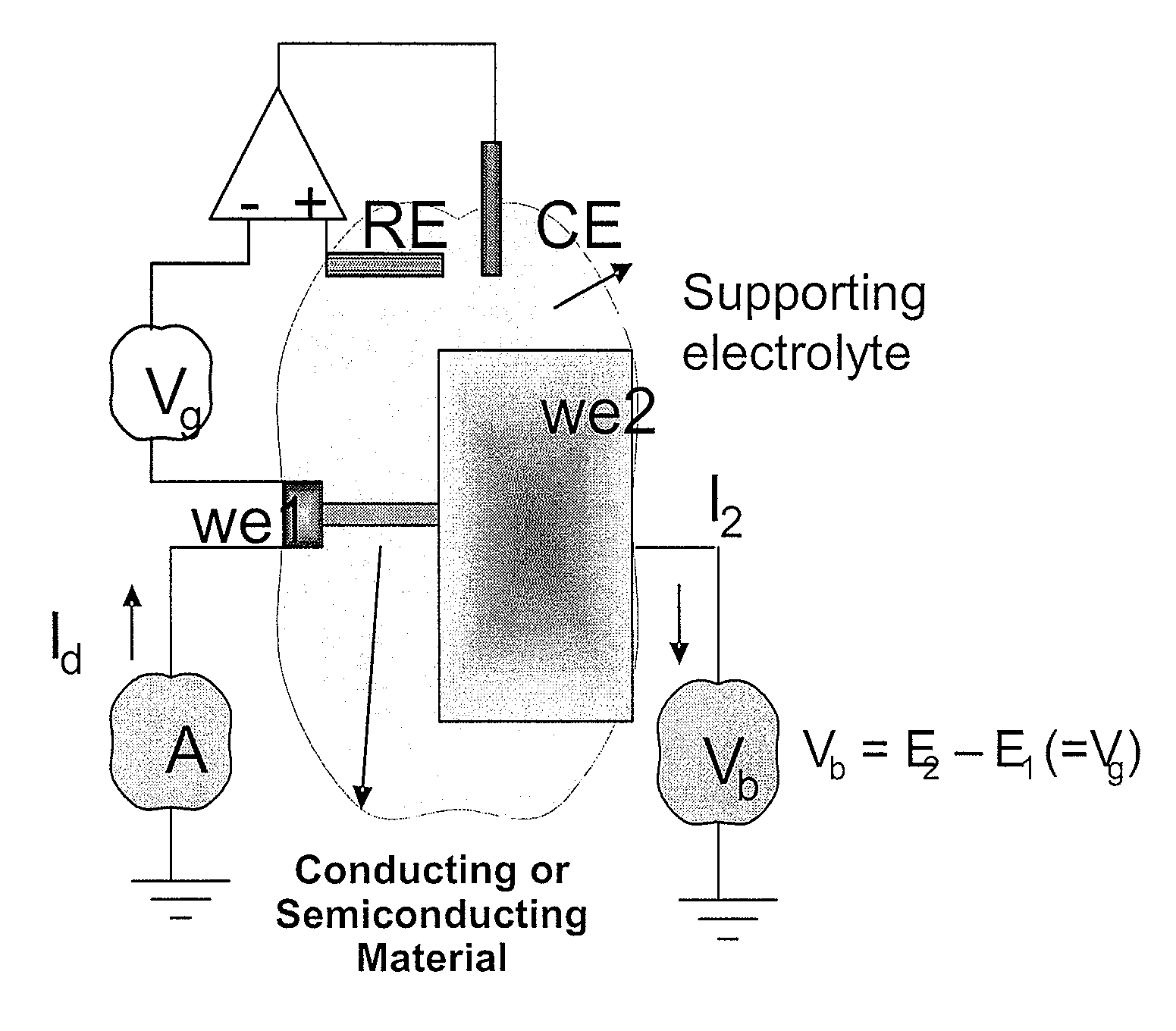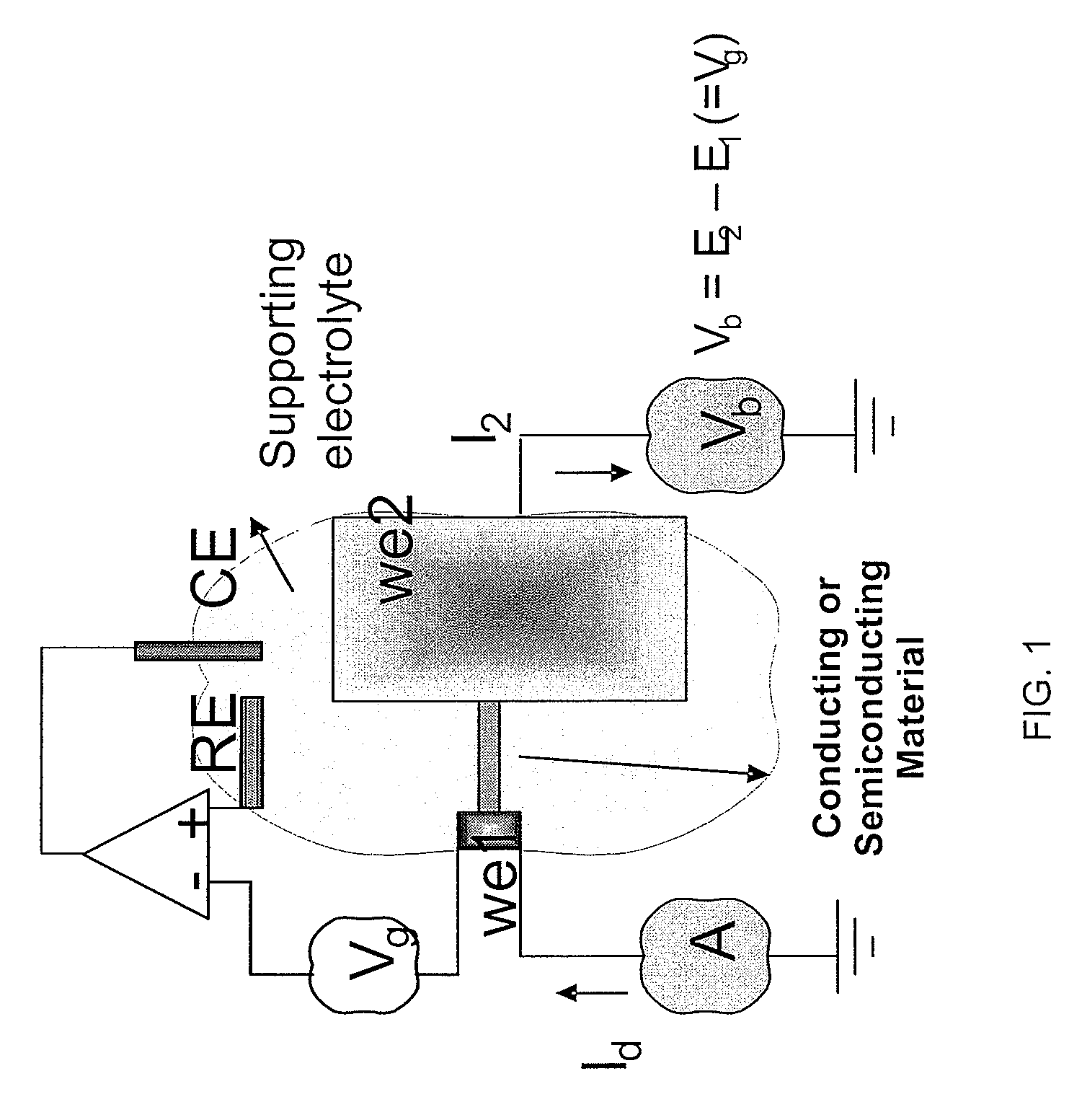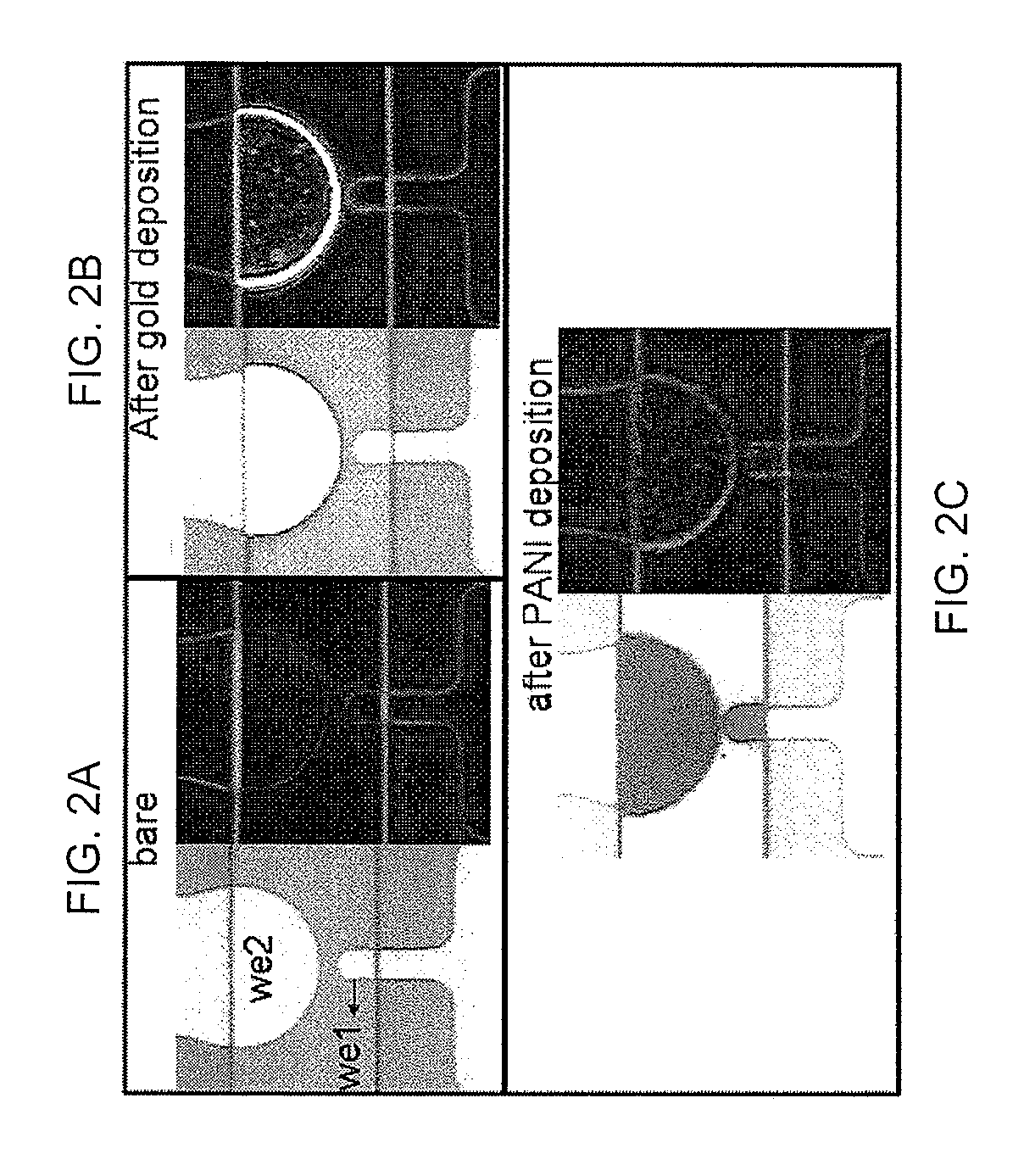Systems and methods for integrated electrochemical and electrical detection
a technology of electrochemical and electrical detection, applied in the field of sensors, can solve the problems of undetectable current flowing between the working and counter electrodes of the sensor, electrical sensors are generally highly dependent on the environment, and the electrochemical detection is not without problems, so as to improve the sensitivity and selectivity of real-time detection
- Summary
- Abstract
- Description
- Claims
- Application Information
AI Technical Summary
Benefits of technology
Problems solved by technology
Method used
Image
Examples
case b
ent Electrical-Electrochemical (E-EC) Detection
[0041]Referring to FIG. 3B, analyte A may be chemically converted to B in the conducting or semiconducting material and may electrochemically oxidize or reduce to another product C or revert back to B (if it is electrochemical reversible species). Chemical conversion of A to B may be induced by chemical modification of the conducting or semiconducting bridge or when conducting or semiconducting bridge native material is sensitive to redox changes from A.
Case C: Dependent Pure Electrical-Electrochemical (E-EC) Detection
[0042]Referring to FIG. 3C, analyte A may be oxidized or reduced electrochemically (EC detection) and the electrochemical product B may be detected on the conducting material (E detection). For example this reaction pathway may be used to detect nitro-explosives that produce intermediate reduction products that can oxidize or reduce the conducting or semiconducting material bridge. Additionally or alternatively, the detect...
example
[0048]The following example is included to demonstrate specific embodiments of this disclosure. It should be appreciated by those of skill in the art that the techniques disclosed in the example that follows represent techniques discovered by the inventors to function in the practice of the invention, and thus can be considered to constitute specific modes for its practice. However, those of skill in the art should, in light of the present disclosure, appreciate that many changes can be made in the specific embodiments which are disclosed and still obtain a like or similar result without departing from the scope of the invention.
[0049]An illustrative, non-limiting experiment demonstrating the capability of EC-E nanosensor to detect the neurotransmitter dopamine (Dpm) in presence of its mayor physiological, ascorbic acid (AA), at a concentration level three orders of magnitude higher is shown. Referring to FIG. 4, the time course of EC-E sensor made of conducting bridge of polyanilin...
PUM
| Property | Measurement | Unit |
|---|---|---|
| voltages | aaaaa | aaaaa |
| surface area | aaaaa | aaaaa |
| electrical | aaaaa | aaaaa |
Abstract
Description
Claims
Application Information
 Login to View More
Login to View More - R&D
- Intellectual Property
- Life Sciences
- Materials
- Tech Scout
- Unparalleled Data Quality
- Higher Quality Content
- 60% Fewer Hallucinations
Browse by: Latest US Patents, China's latest patents, Technical Efficacy Thesaurus, Application Domain, Technology Topic, Popular Technical Reports.
© 2025 PatSnap. All rights reserved.Legal|Privacy policy|Modern Slavery Act Transparency Statement|Sitemap|About US| Contact US: help@patsnap.com



